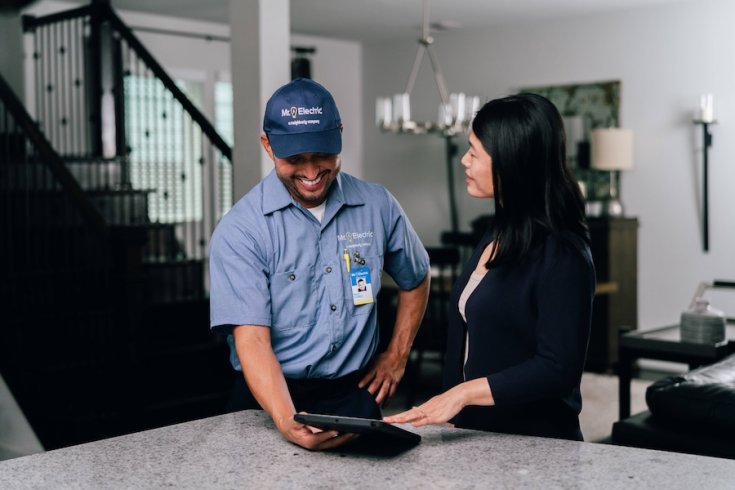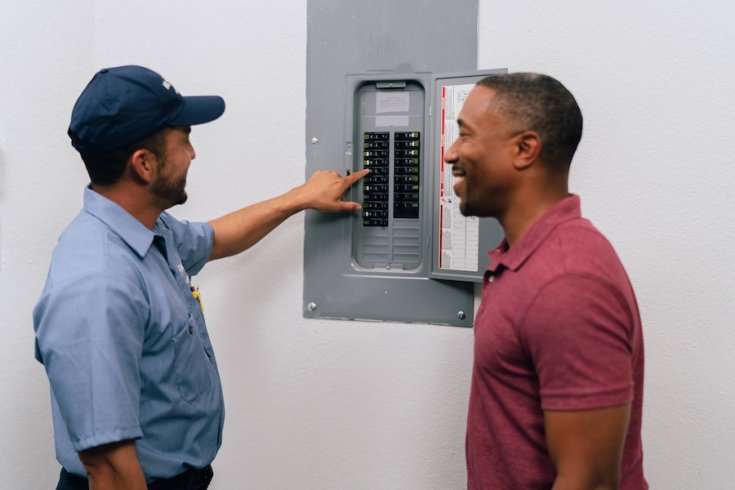Is a New Panel Necessary When Setting Up a Home Generator?
From keeping the refrigerator running to charging our phones and watching TV, electricity powers just about everything in our modern lives. In fact, we rely on electricity so much that we hardly notice it. A power outage quickly reminds us how essential electricity is to our daily lives, though.
Fortunately, a home generator installation can keep the power on even when the utility lines come down – but what goes into the installation? Will you need completely new electrical wiring or panel?
In this brief article brought to you by Mr. Electric, we explain how the installation process works and explore when a new electrical panel might be necessary. If you’d rather consult a certified electrician, then call Mr. Electric to get in touch.
What is a standby home generator?
A standby home generator is a backup power system that automatically kicks in when your utility power goes down. Unlike portable generators that require you to manually connect them, a standby generator is permanently installed outside your home just like an air conditioning unit. When the power goes out, the generator automatically switches on in a matter of seconds.
Why consider a home generator?
Let’s face it, power outages aren’t just an inconvenience; they can also be costly and disruptive. Whether you’re working from home or simply trying to get through a regular day, a power outage can grind everything to a halt. A generator keeps critical systems running smoothly.
It’s not only about productivity and convenience. Extended power outages can a host of problems. Food in the refrigerator can go bad, frozen pipes can burst, and basements can flood if sump pumps don’t activate during heavy storms.
How does the installation work?
The installation process for a standby generator is more straightforward than you might think, but that does not mean it is a simple DIY task.
First, you’ll need to choose a generator that meets your power needs. The size of the generator will depend on how many appliances and systems you want to keep running during an outage. Next is placement and permitting. The generator will typically be installed outside your home near your main electrical panel, but it must comply with local building codes.
The generator is then connected to your home’s electrical system through an automatic transfer switch. This switch detects when power is lost and tells the generator to turn on. Finally, the generator is connected to a gas line or propane tank.
From choosing the generator to final installation, the whole process usually takes a few days. Once the system is up and running, though, it’s mostly a set-it-and-forget-it solution. However, it is always advisable to check up on it a few times a year.
When is a new electrical panel necessary?
In most cases, installing a home generator doesn’t require a significant amount of electrical work. However, you may need to upgrade your electrical panel to handle the additional load from the generator. Here’s when that might be necessary:
- If your home has an old or outdated electrical panel with inadequate capacity or safety features.
- If your current electrical panel is already maxed out, meaning it doesn’t have enough room for additional circuits.
- If you’re adding a generator to a home with more complex electrical systems like those with solar panels or a battery backup.
When you choose Mr. Electric for your installation or electrical repair service in Austin, TX, you can rest assured our certified electrician will walk you through the process.
Request urgent assistance today
Is your electrical system giving you problems? Whether you need an electrical panel repair or a certified electrician’s expert opinion, the professionals at Mr. Electric are ready to help. Call or message us today to request a dispatch to your home or business as soon as possible.







